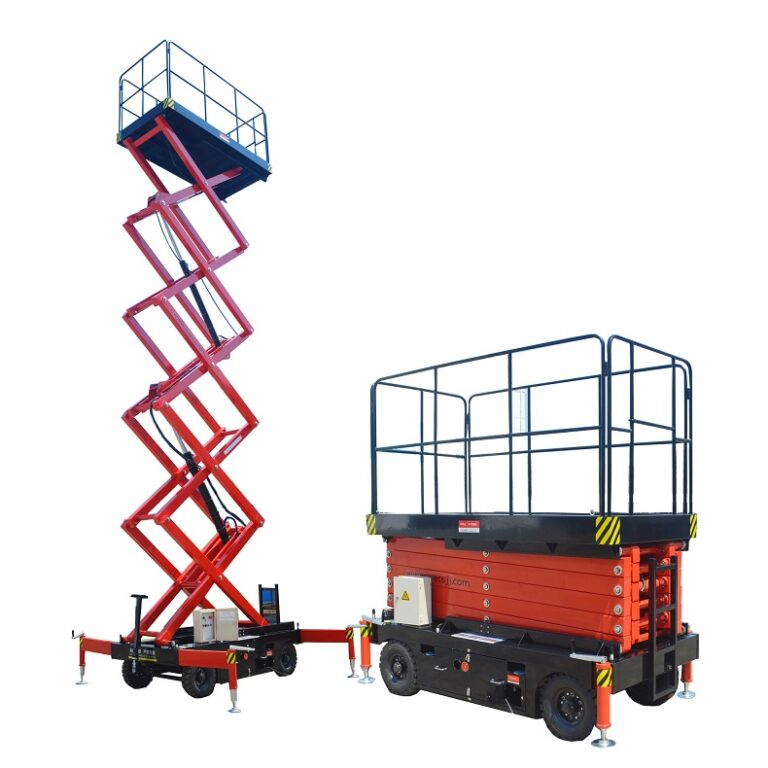A Comprehensive Guide to Forklifts and Aerial Platforms
Forklifts and aerial platforms are essential tools in various industries, from construction to warehousing. Understanding their functionalities, applications, and safety measures is crucial for efficient and safe operations. This comprehensive guide delves into the key aspects of forklifts and aerial platforms.
Types of Forklifts
Forklifts come in various types, each designed for specific tasks:
 forklifts scissor aerial platform | China Trade price on Manufacturer Wholesale scissor aerial platform Materials Handling Platforms sale Buy Online Industrial Equipment
forklifts scissor aerial platform | China Trade price on Manufacturer Wholesale scissor aerial platform Materials Handling Platforms sale Buy Online Industrial EquipmentCounterbalance Forklifts: The most common type, used for lifting and transporting heavy loads.
Reach Trucks: Ideal for narrow aisles and high shelving, offering extended reach capabilities.
Pallet Jacks: Used for moving pallets over short distances, available in manual and electric versions.
Telehandlers: Equipped with extendable booms, suitable for rough terrains and construction sites.
Types of Aerial Platforms
Aerial platforms, also known as aerial work platforms (AWPs), are used to elevate workers to high areas. Key types include:
Scissor Lifts: Provide vertical elevation through a crisscrossing support mechanism. Ideal for indoor maintenance and construction tasks.
Boom Lifts: Feature extendable arms, allowing for both vertical and horizontal reach. Suitable for outdoor and complex tasks.
Personnel Lifts: Compact and portable, designed for single-person use in indoor settings.
Applications
Forklifts and aerial platforms are versatile and find applications in various industries:
Warehousing: Forklifts are used for loading, unloading, and transporting goods within warehouses. Aerial platforms assist in inventory management and maintenance tasks.
Construction: Telehandlers and boom lifts are essential for lifting materials and workers to elevated areas. Scissor lifts are used for tasks like painting and electrical work.
Manufacturing: Forklifts move raw materials and finished products, while aerial platforms facilitate equipment maintenance and installation.
Safety Measures
Ensuring safety while operating forklifts and aerial platforms is paramount. Key safety measures include:
Training and Certification: Operators must undergo thorough training and obtain certification. Regular refresher courses are recommended.
Pre-Operation Inspections: Conduct daily inspections to check for any defects or malfunctions. Report and address issues immediately.
Load Management: Adhere to the equipment’s load capacity. Secure loads properly to prevent shifting or falling.
Personal Protective Equipment (PPE): Operators should wear appropriate PPE, including helmets, gloves, and safety harnesses for aerial platforms.
Environmental Awareness: Be mindful of the surroundings, including obstacles, uneven surfaces, and weather conditions.
Maintenance and Upkeep
Regular maintenance is crucial for the longevity and performance of forklifts and aerial platforms. Key maintenance practices include:
Routine Checks: Perform routine checks on critical components such as brakes, tires, hydraulic systems, and control mechanisms.
Scheduled Servicing: Follow the manufacturer’s recommended servicing schedule. This includes oil changes, filter replacements, and lubrication.
Record Keeping: Maintain detailed records of inspections, repairs, and servicing. This helps in tracking the equipment’s condition and identifying recurring issues.
Conclusion
Forklifts and aerial platforms are indispensable in various industries, offering efficiency and versatility. Understanding the different types, applications, and safety measures is essential for optimal use. By adhering to best practices and maintaining the equipment, operators can ensure safe and efficient operations. Remember, a well-informed operator is a safe operator.